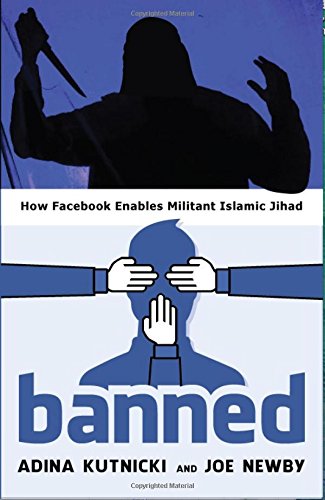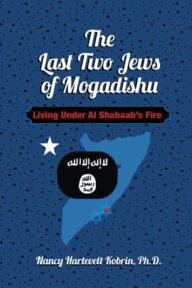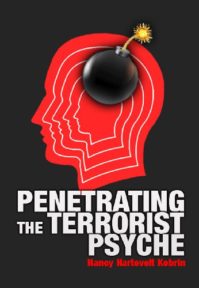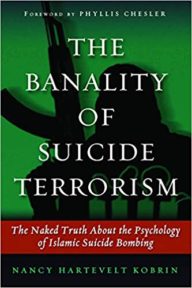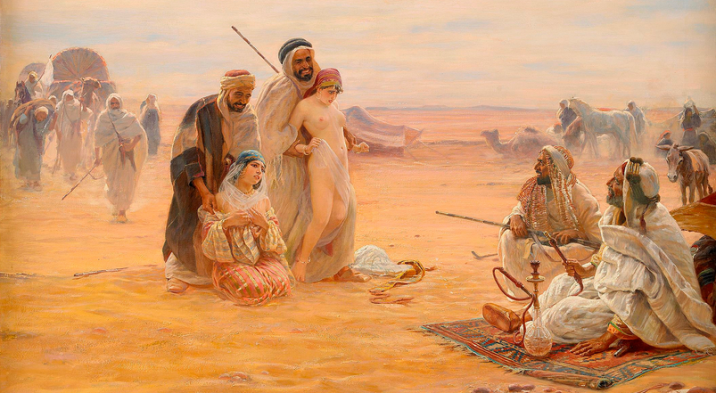
Analyzing Terror through Imagery: An Interview with Nancy Hartevelt Kobrin
Reprinted from the AIGA Journal of Design | Filed in Voice: Journal of Design in ‘Off the cuff‘
BY STEVEN HELLER | Published September 30, 2008
Download Full-Text PDFThe imagery associated with terrorism is every bit as terrifying as the acts—and longer lasting. The images created to encourage terrorists to engage in radically violent behavior also serve as a powerful trigger in causing further acts. Dr. Nancy Hartevelt Kobrin, a psychoanalyst in private practice in St. Paul, Minnesota, studies this kind of imagery. She wrote her doctorate in comparative literature, romance and Semitic languages and semiotics specializing in Aljamía. She says she “evolved” into a counter-terrorist expert upon creating a theory of imagery to explain the Islamic suicide attack as a crime scene related to serial killing by proxy. Her book, The Sheikh’s New Clothes: The Naked Truth About Islamic Suicide Terrorism, was abruptly pulled from production in 2006 after Pope Benedict XVI’s comments at Regensburg (it is currently being considered by other academic presses). She has lectured (in Spanish) to Madrid Police following the train attacks, to the U.S. military, NATO, Israel’s Interdisciplinary Center for Counter Terrorism, RAND and local law enforcement, and she often writes with Phyllis Chesler, PhD. We asked Dr. Kobrin to explain her theories and discuss the role imagery plays in the war for and against terror.
Heller: As a psychoanalyst, how did you become interested in imagery?

Kobrin: I am pretty dyslexic, so I think I have always looked at the world in a different way, through images, even though I have studied many languages. I was always fascinated with the grapheme and sound, because I had so much trouble learning how to read English. The grapheme is an image, and in Islam, calligraphy plays a big role. Yet we also know that you are not supposed to make images of lifelike beings, such as the Prophet Muhammad and Allah. Of course, there is a huge debate within the theology of Islam over this issue. Similarly, in Judaism there is the prohibition about making an image of God. Freud thought that this made one turn inward and to think more abstractly. I don’t really know, but it is interesting to me from the point of view of sensory perception.
Kobrin: I am pretty dyslexic, so I think I have always looked at the world in a different way, through images, even though I have studied many languages. I was always fascinated with the grapheme and sound, because I had so much trouble learning how to read English. The grapheme is an image, and in Islam, calligraphy plays a big role. Yet we also know that you are not supposed to make images of lifelike beings, such as the Prophet Muhammad and Allah. Of course, there is a huge debate within the theology of Islam over this issue. Similarly, in Judaism there is the prohibition about making an image of God. Freud thought that this made one turn inward and to think more abstractly. I don’t really know, but it is interesting to me from the point of view of sensory perception.
Heller: And then how did this merge with an interest in violence?
Kobrin: While I was writing my dissertation—which was a two-volume work on Ahadith Musa (the Legends of Moses in Aljamía)—I suffered a personal trauma. My best friend was murdered. I wound up on a training analyst’s couch and found psychoanalysis very helpful. I then went on to train. To me, psychoanalysis is a subfield of semiotics, as it is a meaning-making endeavor. Yet I never lost my true passion for medieval Iberia/Al Andalus. In everything we do, there is always a kernel of the personal and what we are attempting to master about it. Murder took on a particular meaning for me.
Heller: You are a psychoanalyst, Arabist and counter-terrorism expert with a particular interest in imagery and its power to move people to action. Violence is so physical. So, how does imagery fit into your work?
Kobrin: Violence is communicated through imagery and nonverbal behavior. In order to understand it you must also factor in aggression, rage and its psychodynamics. Violence is a kind of relationship or bonding between victim and perpetrator. Think of Kafka’s prisoner and executioner. Suicide bombers and their terrorist groups kill those who they envy.
But here I am getting ahead of my story…
Heller: Yes, let’s discuss your story first. You clearly have some kind of mission.
Kobrin: I began to look at individual trauma within a cultural context. Basically, my quest to understand the coexistence of the three faiths in Spain was my desire to understand how different people in a family live under the same roof. I developed an interest in post-traumatic stress disorder. So there was this parallel between the personal and my “academic” work. At the same time, I was tracking terrorism in Israel on my own, somewhat intuitively. I had previously studied at the Hebrew University in Jerusalem, so I was interested in the region. When the bombs went off in Lebanon in the early 1980s, I knew that it was not good. Then there was the first suicide bombing along the green line in Israel in 1993, and I sensed that it was escalating. At the same time I was listening clinically to victims of trauma, I began to flip the paradigm and contemplate the mind of the perpetrator. At one point I said, “Wait a second. I need to read this functional, i.e., victim-perpetrator, as a kind of traumatic bonding.”
Heller: This is very complex thinking, as if you’re trying to work out an intricate puzzle.
Kobrin: Somehow, with all of this stuff percolating inside of me, I associated to the image of Shakespeare’s Othello, the North African military Moor Muslim. Part of the puzzle seemed to snap into place. Here we had murder-suicide and in a relevant cultural context. Othello’s name is thought to mean ‘little bull’. He suffered from delusional jealousy, which is a precursor of homicide. Othello had an obsession with the female—Desdemona, his wife—and her sexual purity.
Heller: How does this thought process snake back to suicide bombing?

Heller: What, then, was the image of murder-suicide you conjured?
Kobrin: Murder-suicide routinely occurs in domestic violence—the killing of one’s own. Moreover, in Arab culture you have honor killing, or—as my estimated colleague Dr. Phyllis Chesler calls it—honor murder. Honor murder is different from domestic violence in that it is premeditated (in some instances domestic violence can be premeditated, though generally it is not). Honor murder—and its horrific imagery—is a good example of when bad behavior becomes normalized within a culture.
As an analyst, I am trained to ask the question, what is the psychological meaning of such and such? So, I pondered the psychological meaning of, why all these body parts? In object relations theory, the body parts are considered the psychic representation of an un-integrated picture of the early mother. When a baby is first born, he or she does not know the mother as an individual, separate person. The baby is in a state of fusion with the mother. It reminded me of the Madonna and Child; I coined the term “maternal cameo” in order to explore this life fusion as opposed to the death fusion.
Heller: Blaming the mother sounds very Freudian.
Kobrin: My theory is not to blame the mother. On the contrary, it is to explain how difficult it is for the female in a shame/honor culture, being chronically blamed.

The female gains a distorted sense of power by giving birth to a male. She lives her life through the male baby, who is like a fetish to her rather than a person in his own right. In all cultures where suicide terrorism has occurred, there has been a cultural prohibition against separating from the mother. The image is one of bondage. In Arab culture, you are never, ever supposed to separate from ummi (mother). The horrific imagery reveals a kind of traumatic bonding or a chaotic maternal attachment. This prohibition precipitates the lack of a personality infrastructure—this is the symbolic level of terrorism. Not all counter-terrorists want to contemplate this level. To talk about the mother makes people very uncomfortable. It takes them way outside of their comfort zone. The majority of counter-terrorist experts are men, and Mom is not a favorite subject. However, if one doesn’t understand the symbiotic tie to the mother in Arab culture, you are going to miss a big part of it.
Heller: How else does the mother image play a role?
Kobrin: I believe that some of the imagery symbolically expresses this special tie to the mother run amok. It is a symbolic language, which is also universally related to.
Terrorism creates a communicative circuit through its imagery. There are four things to keep in mind: 1) we are more alike than we are different; 2) all behavior is potentially meaningful; 3) violence is violence—it does not care how we humans label it as domestic violence, criminal violence or the political violence of terrorism; and 4) everybody has a mother. Much of the imagery, and even some of the ideological language, harkens back in one way or another to the code of the mother. The terrorists don’t feel their terrors—they become the terror. They are mother-dependent. The Saudis repeatedly sent Osama’s mother to him in the Sudan and in Afghanistan in order to get him to behave, and he wouldn’t. This was a bad sign and the Saudis knew it.

Terrorist imagery abounds on the internet and includes many images of mothers and sons.
Heller: Does ancient imagery play a role in your work? Can you find connections between terrorism today and images of the past?
Kobrin: It is a bit more difficult in Islam, given the prohibition against images. Yet of course all humans carry around images in their heads, regardless of a prohibition, and many of those images become written down in narratives. The images I was looking for were not explicitly depicted. Everything that the Prophet Muhammad did is to be imitated. Imitation involves imagery as well. While Islam has co-opted imagery from Judaism and Christianity, it has no image that is nurturing of life, like the Madonna and Child. Even the Pietà leaves the mother intact and caring in death. In contrast, the most significant image in Islam, which would be relevant to a suicide attack, is how the Prophet Muhammad died. He died in the lap of his favorite and only virgin wife, Aisha, whose name means ‘life’.
Heller: When we think terror, we imagine, among other things, suicide bombers and the accompanying “heroic” video and still images of them. Do these have significance as anything other than the obvious martyr image?

Kobrin: All the martyrdom imagery—the posters, the videos, etc.—are very repetitious and, to me, even monotonous after awhile. However, each and every one of them carry meaning so that we have a big puzzle to put together concerning the image and terrorism. Terrorism gets to be boring when you study it as intensively as some of us do. It is the same old, same old, and then “bam!”—a modeling moment like 9/11. The fact that there is so much repetition unconsciously reveals dissociated traumatic experience. The terrorists are clueless about what they tell us about their mindset. The graphic imagery of the suicide attack is chaotic and disorganized.
Strategically, terrorists seek to cause chaos so that they can manipulate and dominate the traumatized. What they are not aware of is that they are displaying, and making us experience, the chaos of their own fragile, psychotic minds—[how] they are loosely put together. It can make us desensitized when it is repeatedly inflicted upon us. One no longer feels the horror and we acclimatize to it, which is dangerous because it is acquiescing and being unprepared for the next attack, and there will be one.
Heller: I’ve seen many of the “outtakes” of the aftermath of bombings—photographs that show the utter carnage of a suicide or IED explosion, which is horrific. It’s interesting that most of these images are kept from the public by the news media. Do you think that if they were shown, terrorists might rethink what they do?
Kobrin: Interesting that you should mention the IED—I have a big interest in the networks that produce them and the mind of the bomb makers. I am researching this now, but it is difficult because I only work with open sources. I have not heard of anyone researching this at the symbolic level of the imagery that I am suggesting. However, I believe that it could be quite beneficial to problem solving. I also feel that our “obsession” with the suicide bomber—and especially the female suicide bomber—overshadows the IEDs, so we don’t focus on them as much. Obviously, there is a perverse pornography to the female suicide bomber as well that draws the viewer in.
I do think it is traumatizing to be chronically exposed to that kind of imagery, but I also think that the imagery speaks to a limitation: most of us are spared the horror of the smell of death of the suicide attack. Smell is even more visceral than vision and can induce an altered self-state more quickly. Smell is also very important in Islam, perfume for purity. Smell is the first cranial nerve and very important to the encoding of traumatic memory.
Heller: But would it make a difference to the terrorist?
 Kobrin: Maybe yes, maybe no. I never give up on hope because that is precisely what the terrorists want us to do. However, there is another part of me that says it wouldn’t matter to them, because the terrorists have a cognitive deficit. They lack empathy and the capacity to walk in another person’s shoes. Empathy is something that is acquired early on developmentally in the life of an infant. The terrorists missed the boat on that one.
Kobrin: Maybe yes, maybe no. I never give up on hope because that is precisely what the terrorists want us to do. However, there is another part of me that says it wouldn’t matter to them, because the terrorists have a cognitive deficit. They lack empathy and the capacity to walk in another person’s shoes. Empathy is something that is acquired early on developmentally in the life of an infant. The terrorists missed the boat on that one.
Heller: Do you see any similarities between imagery—posters and such—usedto muster loyaltyin the West and those used in Arab countries?
Kobrin: Yes, I do see similarities because we are more alike than we are different. We all have universal needs. Posters are a special genre and unique tool for ideological recruitment. I have had a long-standing interest in poster art though I do not consider myself an authority on the subject by any means. One of my favorite artists is El Lissitzky. In 1996, I had the opportunity to dabble in poster art for a conference presentation I did in Mysore, India, on “Aesthetics, Politics and Economics in Cross-cultural Studies of Art.” My talk was on posters of protest from the Vietnam era, post-colonialism and post-traumatic stress disorder—I have not had time to systematically study the poster in suicide terrorism. I also saw the Tamil posters in Sri Lanka. This genre needs to be factored into the language of terrorism. It is yet another important piece of the puzzle.
Heller: In the world of counter-terrorism, does imagery play a role?
Kobrin: Imagery and terrorism fit like hand in glove. Understanding how imagery works in the recruitment will be key to ending the violence. I feel that we are only at the very beginning of understanding the phenomenon.
Download Full-Text PDF- The Violent Brutality of Growing Up in A Shame Honor Culture by Nancy Hartevelt Kobrin, Ph.D. - 05/17/2020
- The Coronavirus and Haredi Children – An Educable Moment? Dr. Nancy Hartevelt Kobrin - 04/13/2020
- A Quick Deep Dive into Why Some Populations Are Not Observing Social Distancing: “Internalizing” the Danger of the Coronavirus in Emotionally Religious Populations and Others and What Must Be Done - 03/27/2020

